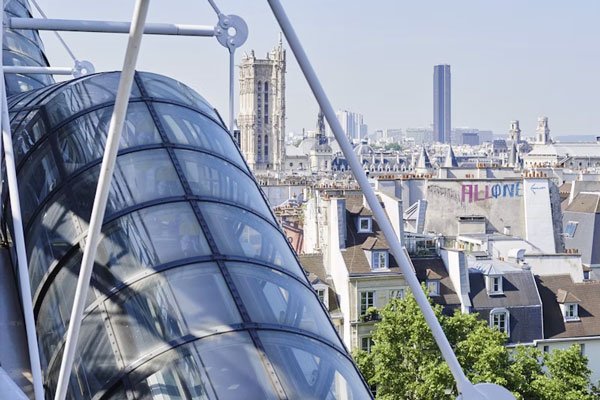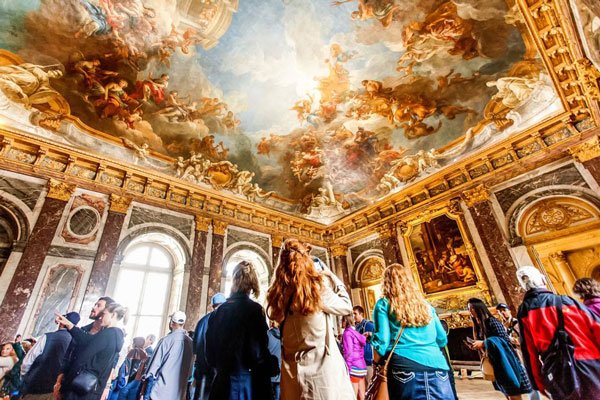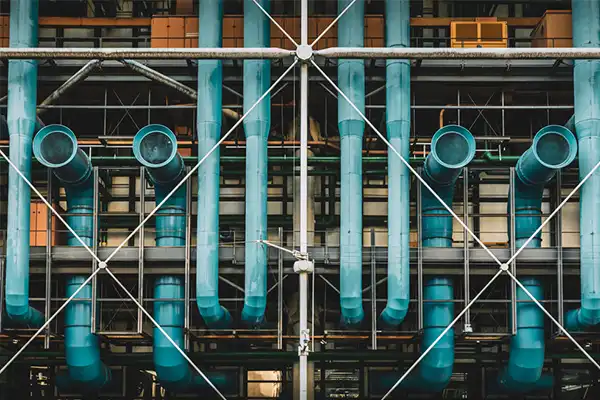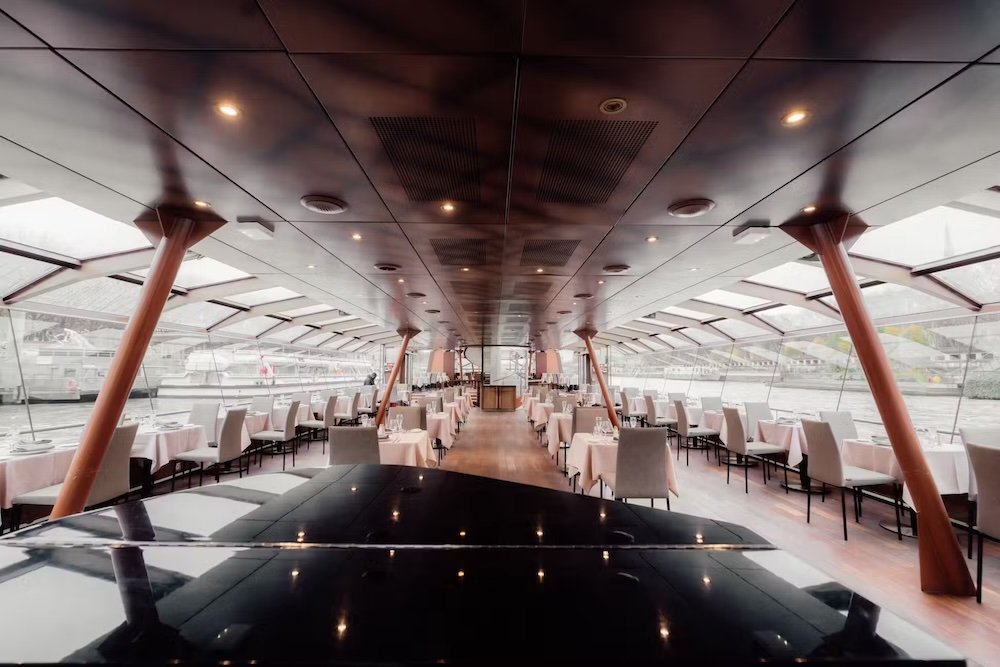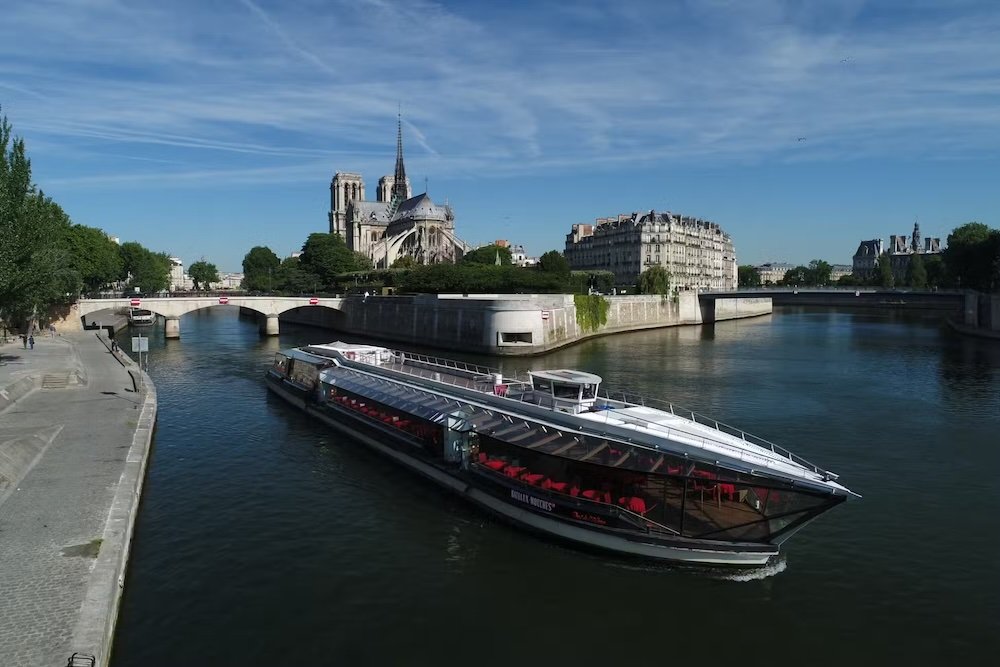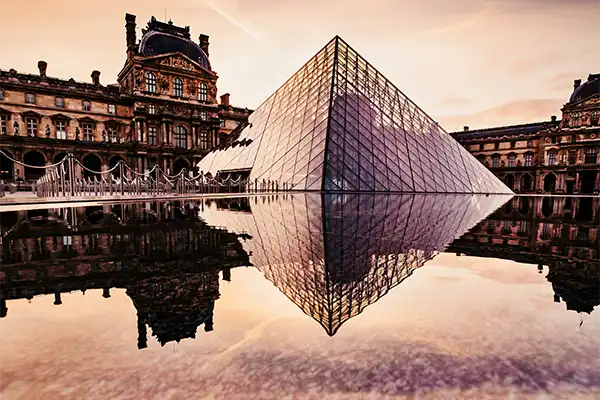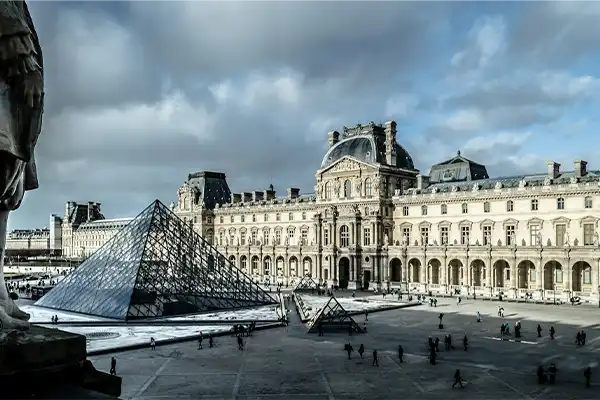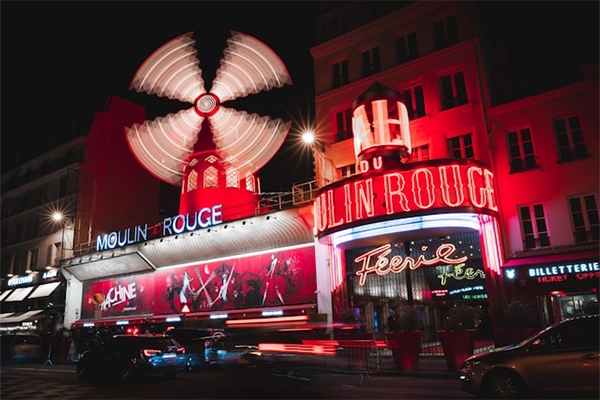Inside Centre Pompidou: Must-See Attractions & Hidden Gems
Inside Centre Pompidou: Must-See Attractions & Hidden Gems
Centre Pompidou stands as an iconic and distinctive architectural marvel, hosting the National Museum of Modern Art; a repository of one of the world’s most extensive collections of 20th and 21st-century art.
Noteworthy for its unique design, the building showcases structural elements like escalators, ventilation ducts, and heating pipes, boldly painted and exposed externally, crafting an intriguing inside-out effect.
Join us on this journey to uncover the fascinating treasures inside Centre Pompidou, as well as kid-friendly activities and insights on the impressive architectural features.
What is inside Centre Pompidou?
Centre Pompidou, a state art and cultural center, was erected in a swift five-year span under the initiative of former French President Georges Pompidou, opening its doors in 1977. The primary aim is to ensure unrestricted access to knowledge for both French citizens and international visitors from all walks of life.
The architecturally striking building is home to the National Museum of Modern Art, complemented by a center for industrial design, a vast Public Information Library housing over 400,000 media and 2,000 reading spaces, a music research center, a children’s workshop, as well as cinema, theater, and lecture halls.
Explore the must-see attractions and hidden gems inside Centre Pompidou:
National Museum of Modern Art: The Musée National d’Art Moderne is the heart of the Centre Pompidou, housing over 100,000 works of art from the 20th and 21st centuries. You’ll find masterpieces by some of the world’s most influential artists.
Among its many masterpieces are:
- Vassily Kandinsky „Mit dem schwarzen Bogen“ 1912
- Robert Delaunay „Manège de Cochons” 1922
- Otto Dix „Bildnis der Journalistin Sylvia von Harden“ 1926
- Frida Kahlo „The Frame“ 1938
- Marc Chagall „Les mariés de la Tour Eiffel” 1938-1939
- Henri Matisse “La Blouse Roumaine” 1940
- Piet Mondrian “New York City” 1942
- Ben „Le magasin de Ben“ 1958-1973
- Joan Miró “Triptyque Bleu I, Bleu II, Bleu III” 1961
- Yves Klein “SE 71, L’Arbre, grande éponge bleue“ 1962
- Martial Raysse „Made in Japan – La grande odalisque” 1964
- Jean Dubuffet “Le jardin d’hiver” 1968-1970
- Agam “Layout of the antechamber to the private apartments at the Elysée for president Georges Pompidou” 1972-1974
- Joseph Beuys “Plight” 1985
- Annette Messager “Les Piques” 1992-1993
- Giuseppe Penone “Respirare l’ombra” 1999-2000
- Anselm Kiefer „Für Velimir Chlebnikow : Schicksale der Völker“ 2013-2018
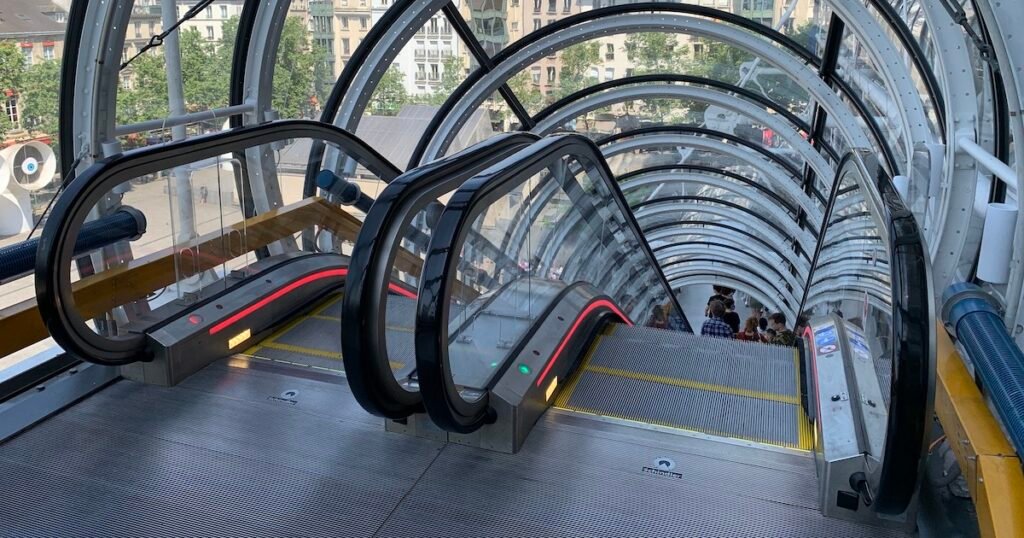
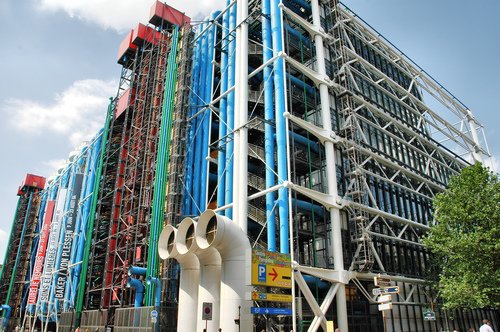
Architectural Marvel: Admire the iconic inside-out design, where functional elements like escalators and pipes are boldly displayed on the exterior. The iconic spiral staircase is a visual delight and a fun way to navigate the museum’s four levels. The transparent design allows you to see the art from different angles and gives you a glimpse of the exhibition spaces.
Rooftop Terrace: Ascend to the top of the Centre Pompidou for stunning panoramic views of Paris. You’ll have an unparalleled perspective of iconic landmarks like the Eiffel Tower, the Notre Dame Cathedral, and the Louvre Museum.
Centre for Industrial Design: Discover the intersection of art and industry in the center dedicated to industrial design, showcasing innovative creations.
Temporary Exhibitions: Keep an eye out for special exhibitions, which may feature contemporary artists and thematic displays. Enjoy the raw energy of Jean Dubuffet’s “Collection de l’Homme – Man’s Collection” or the captivating soundscapes of John Cage’s “Concert for Piano and Orchestra.”
Public Information Library: Take a break from art to explore the vast collection of books, magazines, and multimedia resources at the Centre Pompidou’s Bibliothèque Publique d’Information. It’s a great place to relax and immerse yourself in literature and culture.
Acoustic/Music Research and Coordination Institute: Delve into the world of contemporary music and sound at the Institut de Recherche et Coordination Acoustique/Musique IRCAM, a center for research and innovation in music technology. You can attend concerts, workshops, and demonstrations, or explore the museum’s collection of instruments and sound recordings.
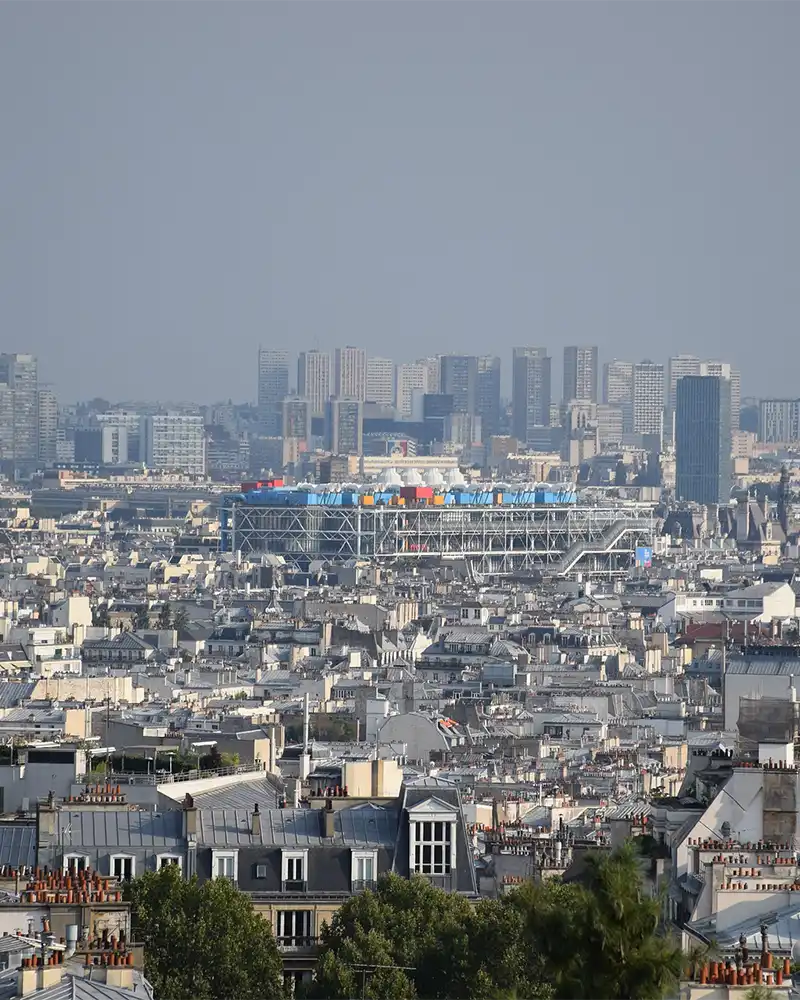
Things to Do inside Centre Pompidou with Kids
Centre Pompidou offers a diverse array of engaging activities for all age groups:
Galerie des Enfants (Kids Gallery)
- An exhibition space encompassing various artistic disciplines.
- Provides children with opportunities for creative exploration through observation and hands-on experimentation.
Atelier des Enfants (Kids Studio)
- Fosters awareness of art and creation among younger children.
- Encourages experimentation with techniques, material handling, and composition layout, offering insights into the artist’s creative process.
Studio 13/16
- An open space tailored for teenagers aged 13 to 16 and young adults.
- Facilitates hands-on experiences and interactions with creators.
- Encompasses a wide spectrum of contemporary creation, including visual arts, dance, music, film, games, video clips, new digital methods, fashion, design, books, and more.
Alternatively, you can of course do your own thing. Here are some suggestions for making the most of your visit to Centre Pompidou with kids:
- Make it interactive: Engage your kids by asking questions about the artworks adorning the monument and encouraging them to observe details and make connections. Use art materials like sketchpads and crayons to draw their own interpretations of the artworks.
- Choose a theme: To make your kid’s museum adventure more focused and engaging, choose a specific theme. This will help narrow down your itinerary and make your visit more meaningful for your kids. Let your imagination run wild as you try to explain.
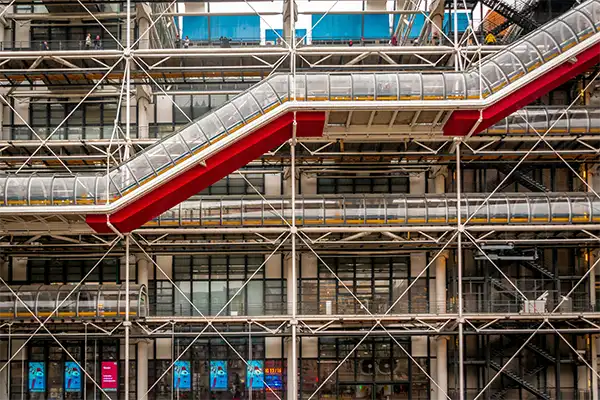
Architecture of Centre Pompidou
Architects Renzo Piano, Richard Rogers, and Gianfranco Franchini united to craft the revolutionary architectural marvel of Centre Pompidou. Celebrated for its groundbreaking design, the trio boldly placed functional elements like elevators and pipes externally, preserving unobstructed interior spaces; a deviation from tradition that ignited extensive discussions on form and function dynamics.
Transparency takes center stage with expansive glass facades offering glimpses into the building’s inner workings. Prioritizing openness, the architects aimed to demystify art, fostering accessibility for a diverse audience. Beyond being a cultural hub, Centre Pompidou stands as an artistic testament, reflecting the architects’ innovative spirit.
A notable side note reveals the project’s selection among 681 competition entries, with the distinguished jury including architects Oscar Niemeyer, Jean Prouvé, and Philip Johnson. This marked a groundbreaking moment, allowing international architects to participate for the first time in France. The announcement in 1971, featuring the sharply-dressed Pompidou alongside the “hairy young crew” of architects, symbolized a “grand bargain between radical architecture and establishment politics”.
Centre Pompidou Tickets & Tours
Immerse yourself in an expertly curated selection of tickets and guided tours crafted to enhance your Centre Pompidou experience.

